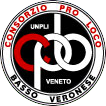GEOGRAPHY
The terrain composition of the surroundings of Concamarise is mainly sandy and goes from the banks of river Menago to the river Tregnone. Between these two rivers there flows the “Fossa” Samuda, which once powered two rice mills. It is the least populated village in the Veronese Valley and it is located south of Verona. The town of Concamariese, with its surface of almost 8 km², is located at an average altitude of 12 m above sea level. The village is divided into two main areas, the old one called “Piazza” and the new one called “Capitello”, which is currently the town centre.
ETYMOLOGY
The village’s oldest record is found in an old document of 1114, with the name of Conchamaris. Its name, formerly also known as “Conca Maris”, is constituted by the pairing of two words: “Conca” meaning hollow, recess or wedge and “Maris”, Latin word for “lamerese” or “merese”, ancient words for “pond”. Both elements can be found in the town’s area. It is well known how once the territory was a swampy ondulated land, rich in stagnating water.
HISTORY
First appearances of Concamarise in recorded history can be found in a document dated 1114, according to which the Emperor Corrado III ensured the protection to the church of Nonantola, and which granted to Nogara’s court the honour of housing the parish. In 1225 the town proclaimed itself a free Comune, but would later lose its autonomy becoming the fief of noble families such as the De Palatio, San Bonifacio and the Scaligeri. Since 1405 and throughout the centuries of domination by the Repubblica di Venezia, Concamarise has become property of the Verità, to be then inherited in the 1600s by Giovanni Malaspina, and in the1800s by the Montanari family. From 1929 until 1948, Concamarise was a fraction of the Comune of Sanguinetto. Today, the town is divided into two main areas, the one where the former burg developed, and the other one that grew only in the last decades and is called Capitello, located where the village’s four main roads branch out. The town’s Church was moved here, along with the main social infrastructures. In the old part of Concamarise there are two of the most meaningful monuments for the history of the local community, the old parish and the ancient Villa Verità.
ART
It is worth visiting Villa Bresciani, former Villa Verità, with its fourteenth-century groundwork. There is also the parish of San Lorenzo Martire, built upon the remains of a benedectine convent, inside which there is an altar, an altarpiece and what is left of the frescos of the 1600s. There are several country houses built in the 1700s by noble families, such as corte Lazise of Malaspina, Corte Trivelli Pompei, Corte Camilletti, Corte Bevilacqua Lazise. In 1958 the new parish was built, and some artwork from the old church of San Lorenzo were moved inside it, for example the baptismal font in the shape of a goblet in red veronese marble, and two altarpieces, one dated 1636 depicting “Santo Antonio da Padova, Carlo Borromeo e Francesco d’Assisi” by Giovan Battista Amigazzi from Verona, the other depicting the two saints “Lorenzo and Stefano” in a landscape.
ECONOMY
Th economy of the comune is based mainly on agriculture. The main cultivations are corn and tobacco. During the last few decades, craftsmanship developed towards the production of furniture and their restoration. Cattle and pig farms recently gave birth to a thriving butchery industry recognised at an international level.
